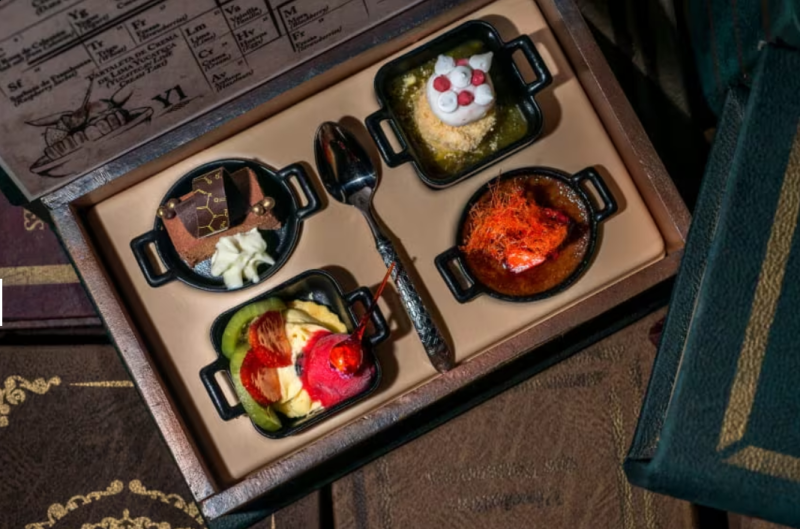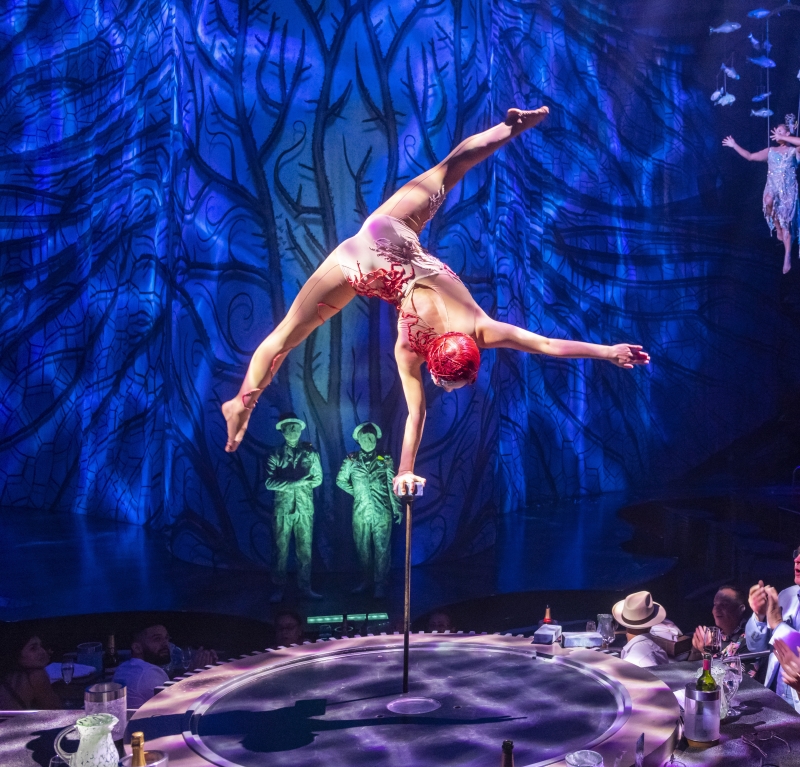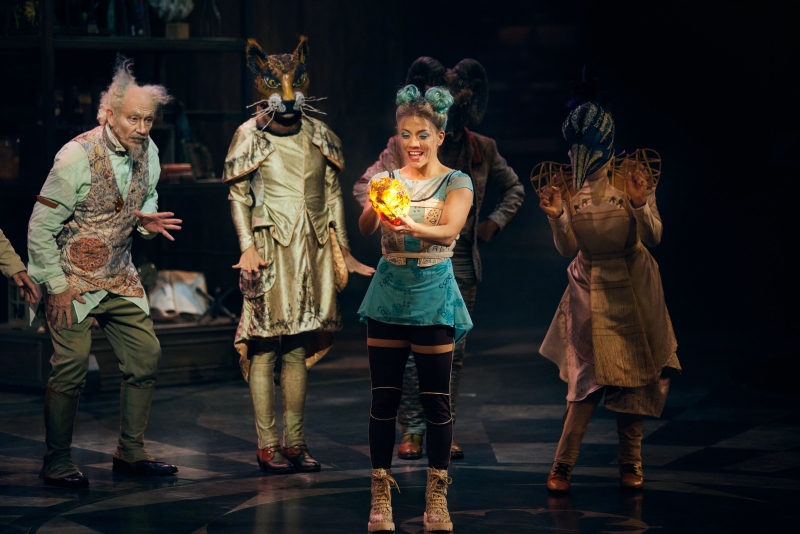Cirque du Soleil's JOYÀ Celebrates its Ninth Anniversary
Cirque's only dinner theater offers a unique experience although it features many familiar Cirque acts.
Almost everyone in North America has heard of Cirque du Soleil. The Canadian entertainment company that produces an odd hybrid of circus, acrobatics, and dance performance has several touring shows and resident productions in Las Vegas. It has a holiday show and an ice spectacular. But there is only one Cirque du Soliel dinner theater experience and it is in Mexico.
A little over nine years ago, Cirque du Soleil’s JOYÀ (pronounced “Hoi-ya”) premiered at Vidanta Riviera Maya as the first resident Cirque du Soleil show in Latin America. A collaboration between Grupo Vidanta and Cirque du Soleil, JOYÀ sits in a 650-seat theater built exclusively for it. The companies began working together in the fall of 2009, conceiving, planning, and building; it took five years to go from discussion to production.
The theater, perc hed above a large lagoon, was designed to look like it sprung up from the jungle. It’s a beautiful setting worthy of the breathtaking resort surroundings. But what’s more important is what is inside—the only Cirque dinner experience.
hed above a large lagoon, was designed to look like it sprung up from the jungle. It’s a beautiful setting worthy of the breathtaking resort surroundings. But what’s more important is what is inside—the only Cirque dinner experience.
“The theater is built for the show, therefore it allows us to expand technically on what we can do with the space, and it also becomes our home,” said JOYÀ Artistic Director Caroline Sicard, who joined the show a couple of years ago and serves as the production’s on-site director. “We’re really welcoming the audience into our house every night to provide a feast for the senses.”
You can buy tickets that are “show only,” but to get the full experience you should do at least the dinner, and possibly the additional VIP cocktail experience that occurs in a separate room. (The cocktail experience is complete with a separate story and dry-ice-aided visual effects.)
As you walk into the main theater, you will notice the borders of the stage are filled with what look like books and they also hang from the ceiling, giving off a real library vibe. There are seats around large semi-circle tables and those next to smaller tables. Intricate chandeliers hang throughout the theater—some reminiscent of jellyfish, some reminiscent of other things from the natural world.
There is a pre-show musical act with a three-piece band and singer that you can enjoy while you’re eating or just chilling while waiting for the show to begin. While Cirque fans might be used to the original, often bizarre songs that are in Cirque shows, the pre-show music is comprised of traditional hits with lyrics familiar to most. And, as an added bonus, there is tap dancing. I love a good tap, so that set it ahead of most Cirque experiences in my book.
During that pre-show is when the three-course dinner is served. The dinner is inspired by the fantastical elements in the show. The menu is an edible cracker.  A drink produces cloud-like smoke when its ingredients are combined. Your main course might be served in a glowing rock, much like the one that rises to the JOYÀ stage from the theater’s basement during the show. Or it might come out in a treasure chest, reminiscent of the show’s pirate scene. Desserts are served in a giant library book that cracks open to reveal four small treats.
A drink produces cloud-like smoke when its ingredients are combined. Your main course might be served in a glowing rock, much like the one that rises to the JOYÀ stage from the theater’s basement during the show. Or it might come out in a treasure chest, reminiscent of the show’s pirate scene. Desserts are served in a giant library book that cracks open to reveal four small treats.
And then there is the show. Like most Cirque shows, I wouldn’t have known the plot if I didn’t read it ahead of time. I always want to and try to understand each scene, but typically fail. (The brilliance of IRIS was that I got it all.) According to press materials, the show was inspired by the migratory journey of the monarch butterfly, connecting Mexico and Cirque's home base of Canada. Basically—and this you could sort of discern if you didn’t read ahead of time—the plot centers on a grandfather setting his young rebellious granddaughter on a quest for knowledge. Of course, she encounters various obstacles and strange creatures. She battles pirates (who emerge from a large book) and must find her way through a vast jungle comprised of a larger flower and vines. The music is infused with Mexican melodies, Caribbean drums and has a little bit of a samba feel, less esoteric than the music in many Cirque shows. There is also dialogue (in English and Spanish) which makes JOYÀ lightly more easily understood than some Cirque shows. The song lyrics however are oddly in an invented language.
 The acts themselves, other than the knife-fighting pirates, are fairly standard Cirque. For example, there is the hoop diving, aerial hoops, and the trampoline wall. They were well-executed, I had just seen them before. But one special feature of JOYÀ is the intimacy. I was sitting in a very good seat, of course, but the hand balancer came down from the ceiling in what looked like a large lighted jellyfish and performed her act on my table. To see an act that close was amazing. And even the worst seats are not that far from the action. This is especially so because, due to the theater being built for the show, things happen all around. A panel opens up next to the seats that are further back and part of the action unfolds near there. That cannot easily occur in the touring tents because the structure to execute it is not there.
The acts themselves, other than the knife-fighting pirates, are fairly standard Cirque. For example, there is the hoop diving, aerial hoops, and the trampoline wall. They were well-executed, I had just seen them before. But one special feature of JOYÀ is the intimacy. I was sitting in a very good seat, of course, but the hand balancer came down from the ceiling in what looked like a large lighted jellyfish and performed her act on my table. To see an act that close was amazing. And even the worst seats are not that far from the action. This is especially so because, due to the theater being built for the show, things happen all around. A panel opens up next to the seats that are further back and part of the action unfolds near there. That cannot easily occur in the touring tents because the structure to execute it is not there.
There is also a special flare to this show because it doesn’t have to tour. There are masks in the show and they are the nicest masks I’ve ever seen in a Cirque show. According to press materials, it takes five months to create the masks and they have over 10,000 beads and jewels, each glued by hand. It would be hard to keep them in such great shape if they toured, but they don’t need to. Additionally, there is a shooting star effect that I’ve never seen and I have to imagine is easier to pull off in a real theater, rather than a Cirque touring tent.
“We have more space,” Sicard explained. “We have a basement and we can provide more in terms of automation. We have a lift company from the basement. There are more technical aspects that can be implemented as compared to when you're just in a tent.”
Many of the technicians are from Mexico, but only a few of the perfomers are. Others are from all over the world, as Cirque performs typically are. Of course, the performers sometimes change. There are some original cast members currently in the show, but performers do leave. Sicard is in charge of knowing what the show needs when. She gives notes, might modify a lighting cue or something of the sort. She talks to everyone onsite and also at the Montreal Cirque headquarters. Every once and a while Cirque decides to shake up the production with a new act. According to Sicard, this used to happen once a year, but since the pandemic has only happened once. (JOYÀ was not directly impacted by Cirque declaring and emerging from bankruptcy, but the process may have altered behind-the-scenes corporate plans.) The acts only have to loosely fit into the narrative, which means there is a wide variety of options.
Sicard spoke of the amazing effort it is to keep the show up and running. There are two physiotherapists on site to help with injuries. Sicard makes sure the performers are getting the rehab they need when they need it because anyone who has seen a Cirque show knows that the acts are hard to execute. There are 100 costumes in the show and they need to be kept in shape. There are over 30 performers and over 30 technicians. The performers use over 110 colors for their makeup. And this all has to be maintained just like it would on any show.
"Because I watch the show so often, I'll see where I can make a transition better, or where a costume should be fixed," Sicard said. "Then we have an annual review where we reflect on what was great and what could be better. I will propose things like, 'Oh, what if we bring a little bit of this in.' Then we'll sit down with Vidanta and with headquarters in Montreal and see which of those ideas are gonna move forward."
Because the acts are so close to audience members, I had immediate fears. What happened if someone got up when performers were in the audience? If anyone used a flashlight or a flash on their phone, it would spell disaster, way more than at a normal Cirque show. But Sicard said audience members are generally respectful and she didn’t have any horror stories.
JOYÀ is unique for Cirque because it is the only dinner theater, but it’s also pretty unique for a resort to have an original theatrical show in residency. You can buy tickets whether you stay at Vidanta Riviera Maya or not, but many visitors to the resort consider the show an added benefit of staying there, because it’s onsite.
Bordered by beaches and the Caribbean Sea, Vidanta Riviera Maya is over 1000 acres, with 15 bars and restaurants, pools, a golf course, a spa, an upscale water park with the longest lazy river in Latin America, and a flamingo sanctuary. (I’m not a warm-weather person, but a pina colada and a lazy river is a pretty stereotypical dream.) There are go-carts to take resort guests everywhere, so it’s easy to get to JOYÀ if you’re onsite. You just take a cart. That makes the show an added incentive to stay at Vidanta Riviera Maya as opposed to other resorts in the area (of which there are several). When I got off the plane in Cancun, tourism people stopped me, and I asked about entertainment; a couple of resorts were hosting touring bands, many had in-house bands or dance acts or a small magic show, someone had something billed as “a Jersey Boys tribute” (I checked, it was not the theatrical stage show), but JOYÀ stood out.
JOYÀ also stands out among other Cirque shows because of its surroundings. It is a much more complete experience than simply arriving at the Big Tent for a touring show. It is more immersive than a Vegas resident show because the experience begins before you enter the theater; the surroundings and the walkway introduce the world of the show.
I can’t objectively tell you whether the show is a hit or not. There are no grosses. It wasn’t sold out when I was there, but I did not attend at a busy time of year. Because it is in a resort, the financial equation is extremely different than it would be for a standalone show. However, I do know that the people I attended with seemed to like it. I also know that Grupo Vidanta is currently building a theater at one of its other resorts for another new Cirque show, so the company is clearly happy with its Cirque partnership.
Photos courtesy of JOYÀ.
Comments
Videos

